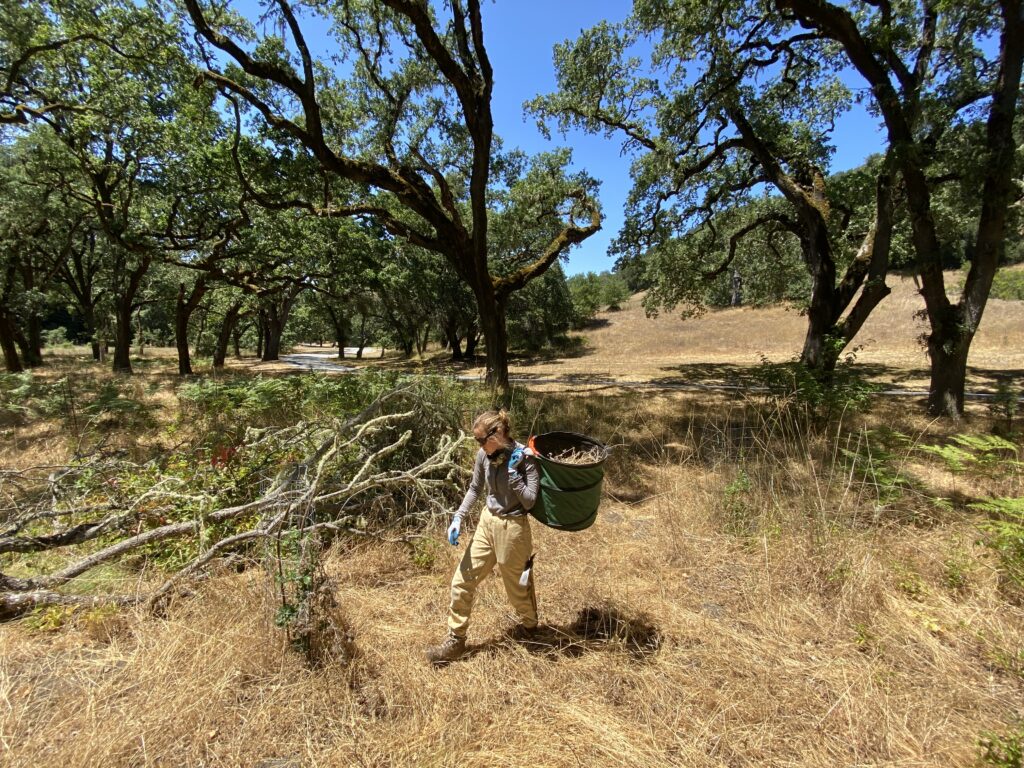Mary Snook hand pulls weeds in the Enchanted Forest in July. Photo by Alix Soliman.

Field Notes: Reflections on Grassland Restoration
August 24, 2021
Mary Snook, 2021 Field Crew Member
In April, we took a trip to Penon peak. We walked in a line to hear the results of the most recent plant surveys, and to learn about some of the successes we had seen so far with the conservation grazing program. I expected to see a few native plants intermixed through the grassland, and maybe a few more in the managed areas, as I had seen in other grasslands on The Preserve, but when we rounded one knoll and saw the next, it was covered in bright purple blue-eyed grass, in full display. Native dandelions and checker-mallows, delicate purple needlegrass, all growing in a quilt of color on the hillside. Seeing the way that a healthy native grassland can look, the biodiversity that it supports, and the value that it has to the greater landscape was inspiring and beautiful.
Visiting this healthy native grassland was a wonderful aesthetic experience, but it was also a reminder of what we are working towards with our Grasslands Initiative and why I decided to work in habitat restoration on the ground and in the field.
I spent much of my undergraduate studies in the lab and in seminars, discussing conservation and coming up with theoretical solutions to the problems we face on a warming, burning landscape. We would talk about what we could do, maybe even do experiments to see what might work in practice to prevent habitat loss for native species and keep people and wildlife safe from coming changes to the climate. I care a lot about these issues and looking at them from an academic perspective was valuable in what it taught me and the perspective it gave me. It is different, however, from the satisfaction of actually making a change – pulling an invasive plant and seeing the native ones nearby ready to take its place, or helping people build productive and sustainable relationships with the land that they live on and interact with every day.
Conservation is not a one-person job. It is not a solely academic job either. It is a practice that can be followed by everyone, and that practice necessarily infiltrates many, if not every, aspect of our lives. Working in conservation felt like the most natural path for me to take, as no matter what career path I ended up on it was something that I would constantly consider and think about in every interaction I had with the land that I live on.
Spending my working days outdoors without any constructed boundaries between me and the land that supports me allows me to consider what I can do for the landscape in-depth. It also gives me the opportunity to help the plants and animals that I share it with. I can’t build connections with the land as we are all inextricably connected already, but I love discovering what those connections are, and how I can make all of these relationships positive. The way that I am able to do that right now is by helping to restore these native grasslands, and I hope to continue to do so in a multitude of ways once I leave the Conservancy as well.